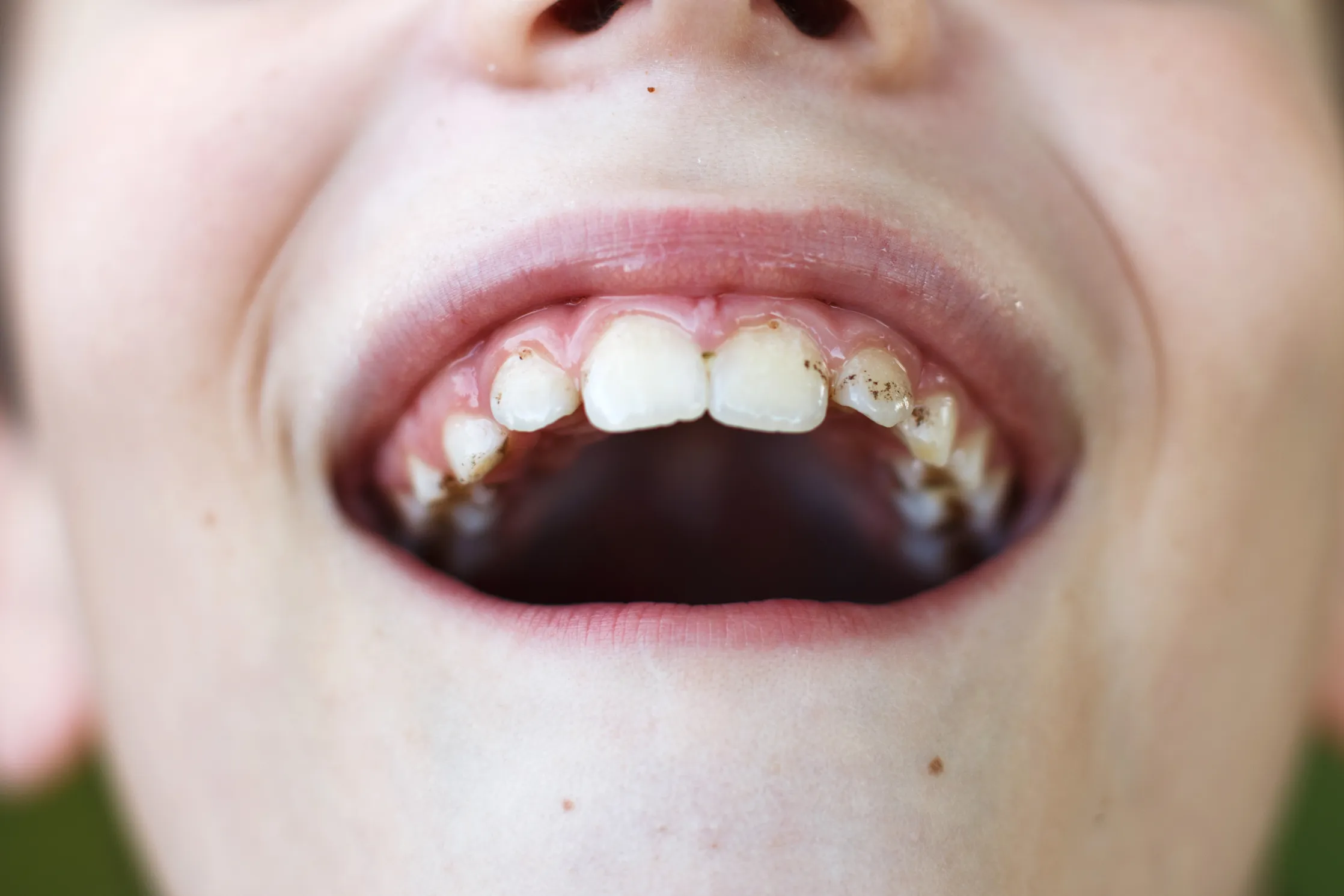Dental plaque is the sticky film that accumulates daily on our teeth. Composed of organic acids produced by bacteria, it can contribute to tooth decay and gum disease, ultimately leading to further tooth loss and gum recession.
Biofilm bacteria feed on carbohydrates and sugars, damaging your enamel and roots over time. Regular brushing, flossing, mouthwash use and visits to your dentist can all help keep bacterial plaque in check.
Brushing
Dental plaque, the sticky film of bacteria that covers your teeth, forms constantly. Most noticeable as that “fuzzy” feeling on your tongue after not brushing for some time, plaque is comprised of microorganisms surrounded by biofilm of polymers which hold them together; dentists refer to it as “dental lesion.” Plaque can damage both teeth and gums as its bacteria produce acids which erode tooth enamel while leading to gum disease.
An important way to combat dental plaque is brushing your teeth twice daily for two minutes at least each time – the American Dental Association recommends using a toothbrush with soft bristles and gentle strokes to ensure all surface area of the tooth surface has been addressed.
Alongside brushing, limiting sugary food and beverages will also be effective at keeping plaque at bay. Since plaque is formed from carbs consumed from carbohydrates like bread, potatoes and corn products, eating fewer of these carbs means less chance for plaque development. While it’s impractical to completely avoid carbohydrates due to healthy food like these containing them as well, try limiting how many sugary snacks you eat each day.
When eating sugary snacks, it is recommended to immediately rinse your mouth with water after eating in order to minimize acid production by bacteria and protect your teeth from further acid attack. You may also consult your Cades Clinic Dentist about ways of removing plaque from hard-to-reach areas of the teeth.
Plaque disclosing products are another option that will stain bacteria within plaque, making it easier for both you and a dental professional to spot them. You can purchase various forms of these plaque disclosing products both at home and dental clinic. They typically contain bright dye that adheres to only rough surfaces of teeth making it easy for both of you to spot plaque quickly. It is advisable that before taking this route it be discussed with your dentist to ensure no allergies exist or other concerns exist with these ingredients or formulations.
Flossing
Bacteria in your mouth naturally collect to form plaque, an adhesive substance that stains your teeth. As these bacteria feed off of food and beverages containing sugars, their acid produces acids which erode tooth enamel and roots – eventually leading to cavities, gum disease and inflammation. But with regular brushing, flossing, rinse with mouthwash use and visits to the dentist you can manage plaque growth by keeping its growth under control.
Dental plaque can be seen and felt between your teeth as an unsightly fuzzy build-up of sticky deposits, but can also be felt with your tongue running over them. Because it sticks tightly to both tongue and teeth, making removal difficult, it is crucial that at least two times daily you brush after every meal and before going to sleep (preferably immediately following). Your dentist or dental hygienist can assist in developing a customized brushing technique tailored specifically for you.
Flossing should be part of your oral hygiene routine, as it removes bacteria that brushing leaves behind and can prevent an inflammation reaction known as gingivitis which if left untreated can progress to periodontitis – which destroys supporting structures of your teeth and causes more severe problems than just gingivitis.
At least once daily, preferably before sleeping, floss your teeth thoroughly with dental floss. Take a long piece and wind it around the index finger and thumb of each hand, gently moving it between each tooth and along the gum line until frayed or brownish areas appear – that means plaque has been removed! Unwind a fresh piece from your “dispenser” finger when necessary before repeating this process around your entire mouth; don’t forget your last molars too!
Your dentist and dental hygienist will recommend the appropriate type of floss to meet your individual needs; any brand with the American Dental Association’s Seal of Acceptance should do just fine. Take your time when flossing; hurrying can cause gums to become inflamed and sensitive.
White Vinegar Rinse
Maintaining good oral hygiene practices is the best way to combat plaque and tartar accumulation, including brushing twice per day with proper technique and quality toothpaste, flossing regularly and rinsing with white vinegar solution – an acidifier which can break down hardened plaque when mixed with water, while its antibacterial properties help kill bacteria that contribute to bad breath odor.
If you fail to maintain proper oral hygiene practices, dental plaque will build up and form tartar (dental calculus) on the enamel of your teeth and along and below your gum line. When combined, plaque and tartar create an ideal environment for harmful bacteria to thrive inside the mouth and cause inflammation and gingivitis; these bacteria consume carbohydrates found within plaque and tartar which in turn leads to tooth decay and gum disease.
Tartar is a rough, porous mineral buildup that can be difficult to remove from the surfaces of teeth. This buildup results from saliva and gingival crevicular fluid (GCF) colliding in the mouth and creating a biofilm of microorganisms covering their surfaces – whether this be between teeth, around base of them, behind them, or along gumlines.
While home remedies such as baking soda and orange peel may help remove tartar, the most effective solution lies with professional dental cleaning services. Dentists have access to equipment designed specifically to remove heavy tartar deposits while their expertise will prevent further plaque build-up or bacteria infections in your mouth.
Vinegar can be harmful to your teeth, so use in moderation and rinse after each application. Acetic acid present in vinegar can wear away at your tooth enamel, leaving it more vulnerable to decay and erosion. As recommended by your dentist, diluting vinegar with water may make using it safer without endangering your dental health.
Regular Dental Checkups
Even with regular oral hygiene practices in place, plaque and bacteria may still build up in hard-to-reach areas of the mouth. Regular dental checkups with your dentist and hygienist will remove these deposits, helping prevent tooth decay while simultaneously eliminating bad breath. Furthermore, they’ll clean surface stains on teeth to leave your smile brighter and healthier than before!
Regular dental visits are important in detecting issues early on, particularly gum disease which can cause tooth loss if left untreated. Since undiagnosed dental conditions can become costly to treat if left unattended, it’s wise to schedule regular check-ups and cleanings to stay ahead of any potential issues.
An initial dental checkup involves two steps; an exam and professional cleaning. During the exam, your dentist will inspect for cavities visually and with probe. They will also take x-rays of your mouth in order to detect hidden abnormalities that could exist within it.
Dental Hygienists perform professional teeth cleanings, also known as prophylaxis. This procedure entails scraping the teeth using a scaler tool called “Scrubb,” to remove plaque and tartar deposits that have built up over time on them – this helps prevent gum disease as well as serious health conditions like Alzheimer’s. Following this, teeth will be polished using gritty paste in order to eliminate stains on surfaces of teeth, leaving them feeling smooth and fresh.
Visits to your dentist are crucial, as they can educate and advise on effective oral hygiene practices, recommend products to enhance them, and explain how to prevent future instances of plaque from forming and recurring, helping you avoid more expensive oral health problems down the line.
Plaque can build up over time on your teeth, making it hard to eliminate by yourself. By visiting the dentist regularly and practicing good oral hygiene practices, however, you can minimize its formation for as long as possible. If you’re concerned about your oral health or are in need of an examination visit us now so we can arrange an examination! Our friendly staff would be more than happy to answer any queries and use this website as a source of further education on avoiding dental plaque and improving overall oral wellbeing – see you soon!
Disclaimer: The content on this blog is intended for general informational purposes only. It is not a substitute for professional medical advice, diagnosis, or treatment. Always consult qualified healthcare providers for personalized advice. Information regarding plastic surgery, dental treatment, hair transplant, and other medical procedures is educational and not a guarantee of results. We do not assume liability for actions taken based on blog content. Medical knowledge evolves; verify information and consult professionals. External links do not imply endorsement. By using this blog, you agree to these terms.





